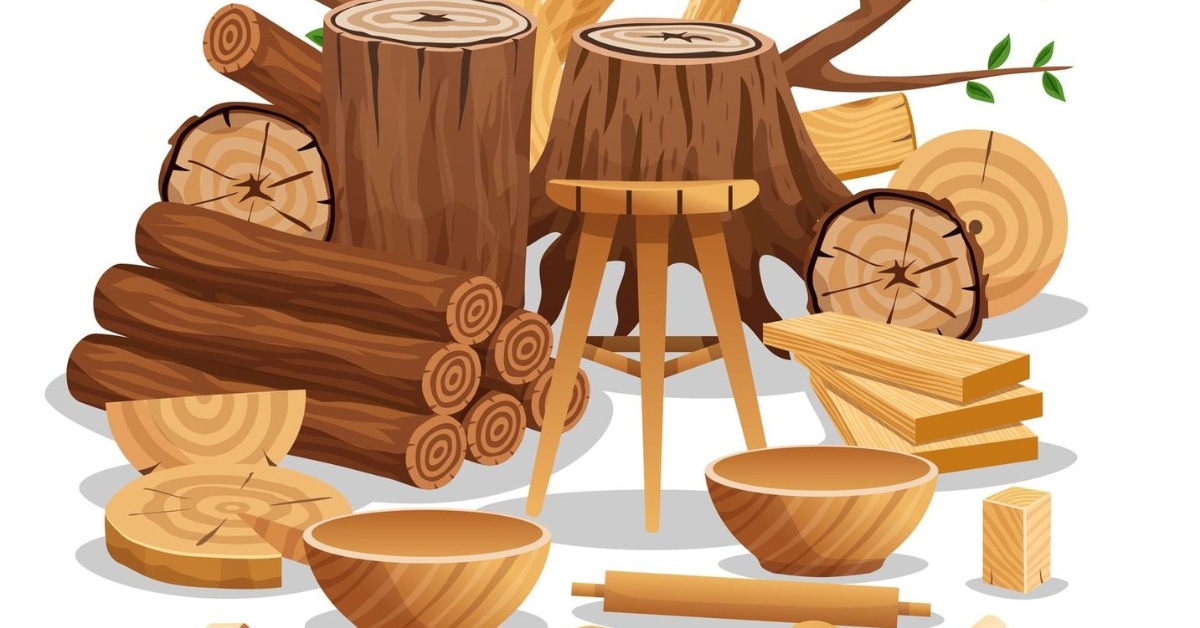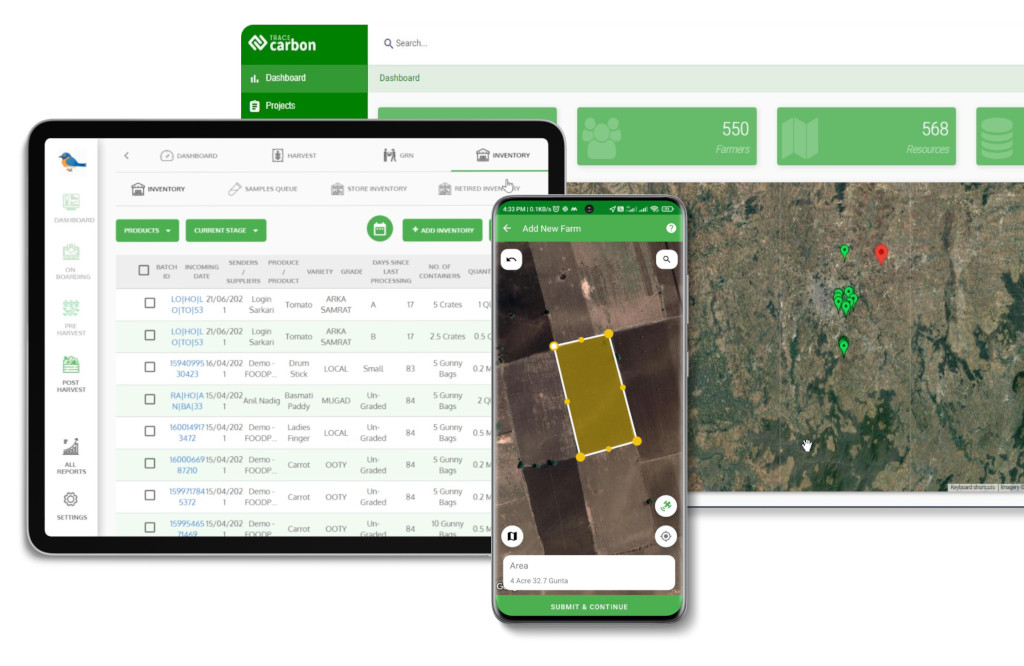Contact: +91 99725 24322 |
Menu
Menu
Quick summary: FSC-certified wood helps reduce your EUDR risk—but it’s not enough. Learn how to combine certification with digital tools to ensure deforestation-free, fully compliant exports to the EU.

“Your shipment may be FSC certified—but is it EUDR-compliant?” As the EU Deforestation Regulation (EUDR) comes into force, companies across the wood and furniture supply chain are confronting a tough reality: even products made from FSC certified wood could still fall short of EU market requirements.
The EUDR isn’t just about sustainable sourcing—it demands proof of zero deforestation at the plot level, complete with geolocation, legal documentation, and a traceable chain of custody. That’s where many exporters, especially in Asia, Africa, and Latin America, are hitting a wall. While FSC certification signals strong environmental and social practices, it doesn’t automatically satisfy the full spectrum of EUDR due diligence obligations.
In this article, we’ll unpack where FSC fits into your EUDR strategy, what gaps still remain and how to bridge them with digital traceability tools. Because in today’s regulatory climate, “certified” is not the same as “compliant.” Let’s explore how to stay ahead—without losing your access to EU markets.
Key Takeaways
The EUDR is an EU law that bans products linked to deforestation or illegal land use. It requires companies to submit verifiable proof—like GPS coordinates, legal land documents, and due diligence statements—for regulated commodities like wood, cocoa, soy, and palm before entering the EU market.
At its core, the EUDR compliance says:
If you want to place products on the EU market, you must prove they are free from deforestation and legal under the laws of their country of origin.
That proof isn’t vague or optional. You’ll need:
And here’s the twist: even if you’re working with FSC certified wood, you still need to complete the EUDR due diligence. Certification helps, but it doesn’t replace your legal obligation under the regulation.
So, why does this matter?
Because in 2026, your buyers in the EU won’t just ask if your wood is “sustainable.”
They’ll ask:
“Can you prove it came from a forest that’s still standing?”
This regulation shifts the responsibility upstream. That means:
If you’re working in the wood, paper, or packaging industry, chances are you’ve come across the little green tree logo. But beyond the symbol, what does FSC certification actually mean—especially in a post-EUDR world?
FSC stands for the Forest Stewardship Council, an international non-profit that sets the gold standard for responsible forest management. If your wood product carries an FSC label, it means the wood was sourced in a way that’s:
But here’s what your buyers really want to know:
Can you prove your product didn’t contribute to illegal logging or deforestation?
That’s where FSC—and its system of checks—comes in.
FSC certification isn’t just about forests. It also tracks the entire journey of the wood, from the moment it’s harvested to the point it reaches your customer. This is known as the Chain of Custody (CoC) certification, and it’s essential for proving your product’s origins—especially under EUDR compliance.
Think of it like a digital breadcrumb trail:
Not All FSC Labels Are the Same
There are three main types of FSC product labels, and understanding them is key:

FSC certification supports your due diligence—but it doesn’t replace it.
FSC helps reduce risk, ensures legal sourcing, and builds buyer trust. But to meet EUDR regulations, you’ll still need:
FSC supports EUDR compliance but doesn’t replace it. Companies must still submit a Due Diligence Statement with precise geolocation and legality proof.
If you’re navigating EUDR and already sourcing FSC-certified wood, you’re ahead of the game—but not off the hook.
Many businesses assume FSC equals automatic compliance under the EU Deforestation Regulation (EUDR). But here’s the real story: FSC can significantly reduce your due diligence burden, but you still need to connect a few more dots.
Let’s unpack how FSC actually helps.
What EUDR wants: Proof that your wood was legally harvested under local laws
What FSC gives you: Annual third-party audits that verify legal rights to harvest, adherence to national forestry laws, and stakeholder engagement
“How do I know this wood wasn’t harvested illegally?”
FSC helps you show that the forest origin is legally managed.
What EUDR wants: Land use history, forest status as of 31 Dec 2020, and origin mapping
What FSC gives you: Access to forest management plans, tenure documents, and traceability logs from certified operations
“Can you trace this shipment back to the source plot?”
FSC provides part of the documentation—but you still need plot-level GPS.
What EUDR wants: A Due Diligence Statement (DDS) that proves negligible risk of deforestation
What FSC gives you: A certification that signals responsible forest management and often earns a lower inherent risk rating in DDS assessments
“How risky is it to buy wood from your source?”
FSC helps reduce your perceived risk in risk-based assessments.
What EUDR wants: A clear, unbroken trace from forest to EU market
What FSC gives you: Chain of Custody certification that tracks the product through every transformation and transfer
“Can you prove this wood didn’t get mixed with non-compliant batches?”
FSC CoC helps you show traceability integrity, batch by batch.

But to meet full EUDR compliance, you still need:
So, you’ve got FSC-certified wood in your supply chain. Great!
But now you’re staring down EUDR and wondering:
“Can we use our FSC certification as a foundation for compliance—or do we have to start from scratch?”
Let’s walk through how you can do that.
FSC tells you how a forest is managed, but EUDR needs to know where it is.
Create a master list of all FSC-certified sources and begin matching each to plot-level GPS or polygon data.
Your team’s goal: “We want to be able to point to a map and say: that’s where the wood came from.”
This exercise sets the stage for DDS submissions—and helps identify which FSC batches are EUDR-ready versus those needing deeper verification.
FSC audits are valuable—but not real-time.
Best practice: Use satellite imagery or mobile-based field visits to verify land use history, especially to prove the forest was intact on Dec 31, 2020—the EUDR cut-off date.
Common gap: “We’re certified, but we don’t have visual or timestamped proof of what the land looked like in 2020.”
That’s where satellite monitoring tools shine.
You already have a Chain of Custody (CoC)—now make it work for EUDR.
Best practice: Build your DDS process on top of your existing FSC CoC system. Use CoC certificates to support batch-level documentation.
Integrating this into your DDS (Due Diligence Statement) workflow makes compliance smoother and reduces duplication.
Let’s be real: FSC paperwork is heavy. Add EUDR? It’s a document nightmare.
Best practice: Adopt a digital traceability platform that:
Tech gives you traceability on-demand—and confidence during audits.
In today’s market, FSC shows you care. EUDR proves you comply.
When you combine them, you:
Even if you’re FSC certified, you still need to pinpoint the exact plot of origin. TraceX captures polygon or point-based GPS data, tags it to every batch, and overlays it with satellite imagery to check for deforestation or forest degradation.
EUDR requires exact geolocation—not just region or forest name.
Discover how cocoa exporters in Nigeria are using farm-level mapping to stay ahead of EUDR and win buyer trust. Whether you’re managing 50 farms or 5,000, TraceX helps you turn plot-level data into full traceability and compliance confidence.
Upload your FSC CoC certificates, audit summaries, and license codes into TraceX’s digital vault. The platform links them to relevant product batches and shipments, making it easy to integrate them into DDS submissions.
Avoid duplication and use what you already have.
TraceX automates the Due Diligence Statement creation process—pulling in GPS data, land use checks, FSC documentation, and legal proof to generate ready-to-submit DDS files per EU requirements.
Save time, eliminate human error, and stay compliant—even at scale.
For mixed FSC sources or uncertain areas, TraceX runs satellite-based risk assessments. You’ll be alerted if any batch risks non-compliance—giving you time to switch sources or mitigate before shipping.
EUDR penalties are steep—catch issues before customs does.
All your data—FSC + EUDR—is stored in a version-controlled document repository with smart search, filters, and 5-year archiving.
FSC shows your commitment. TraceX proves your compliance.
Together, they help you:
FSC certification lays a strong foundation—but when it comes to meeting the EU Deforestation Regulation (EUDR), it’s just one piece of the puzzle. To move from “certified” to fully compliant, companies need granular geolocation data, real-time monitoring, and digital due diligence tools. That’s where platforms like TraceX come in—combining FSC credibility with EUDR readiness. Whether you’re exporting timber, packaging, furniture, or flooring, this hybrid approach keeps your products moving, your risks low, and your reputation strong in the EU market.
No. While FSC helps demonstrate legality and responsible sourcing, EUDR requires additional elements like plot-level GPS data and due diligence statements.
Yes! Traceability documentation from FSC can support your Due Diligence Statement, especially when integrated into a digital traceability system.
Use a compliance platform like TraceX to digitally map origin plots, run deforestation checks, auto-generate DDS, and sync FSC documents—all in one workflow.
